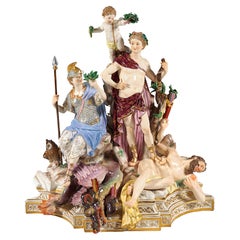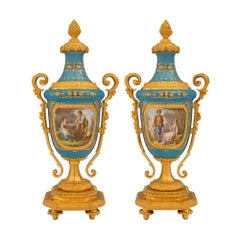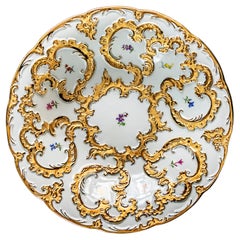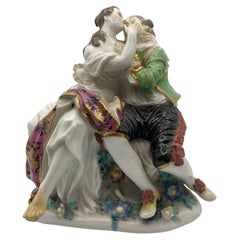Decorative Objects
Mid-19th Century German Baroque Antique Decorative Objects
Porcelain
19th Century French Louis XVI Antique Decorative Objects
Ormolu
1880s German Classical Roman Antique Decorative Objects
Porcelain
Mid-20th Century German Decorative Objects
Porcelain
1740s German Rococo Antique Decorative Objects
Porcelain
1980s French Mid-Century Modern Vintage Decorative Objects
Porcelain
Mid-20th Century German Art Deco Decorative Objects
Porcelain
Early 20th Century German Baroque Decorative Objects
Porcelain
18th Century French Neoclassical Antique Decorative Objects
Bronze, Ormolu
19th Century German Chinoiserie Antique Decorative Objects
Porcelain
1910s German Art Nouveau Vintage Decorative Objects
Porcelain
Mid-19th Century German Antique Decorative Objects
Porcelain, Velvet
Early 1900s German Art Nouveau Antique Decorative Objects
Porcelain
Mid-19th Century German Rococo Antique Decorative Objects
Porcelain
Mid-19th Century German Baroque Antique Decorative Objects
Porcelain
1930s French Art Deco Vintage Decorative Objects
Porcelain
19th Century French Louis XVI Antique Decorative Objects
Porcelain
1860s German Louis XVI Antique Decorative Objects
Porcelain
Late 19th Century German Neoclassical Antique Decorative Objects
Porcelain
1760s German Louis XVI Antique Decorative Objects
Bronze
1910s German Art Nouveau Vintage Decorative Objects
Porcelain
Late 18th Century German Antique Decorative Objects
Enamel
Mid-19th Century German Baroque Antique Decorative Objects
Porcelain
1910s German Art Nouveau Vintage Decorative Objects
Porcelain
20th Century German Decorative Objects
Porcelain
20th Century French Decorative Objects
Crystal
Mid-19th Century French Napoleon III Antique Decorative Objects
Bronze, Ormolu
19th Century French Napoleon III Antique Decorative Objects
Bronze
20th Century German Decorative Objects
Porcelain
19th Century French Napoleon III Antique Decorative Objects
Bronze
1880s French Louis XVI Antique Decorative Objects
Bronze, Ormolu
19th Century Rococo Antique Decorative Objects
Gold, Bronze
19th Century French Late Victorian Antique Decorative Objects
Ceramic, Porcelain
Mid-20th Century French Scandinavian Modern Decorative Objects
Ceramic, Stoneware
1740s German Rococo Antique Decorative Objects
Porcelain
Mid-19th Century German Rococo Antique Decorative Objects
Porcelain
19th Century German Baroque Antique Decorative Objects
Bronze
Late 19th Century French Belle Époque Antique Decorative Objects
Porcelain
19th Century German Antique Decorative Objects
Porcelain
1740s German Rococo Antique Decorative Objects
Ormolu
Early 19th Century German Antique Decorative Objects
Porcelain
1740s German Rococo Antique Decorative Objects
Porcelain
19th Century German Antique Decorative Objects
Porcelain
19th Century French Charles X Antique Decorative Objects
Porcelain
19th Century German Rococo Antique Decorative Objects
Gold Plate
1890s German Baroque Antique Decorative Objects
Gold, Enamel
Late 19th Century German Rococo Antique Decorative Objects
Porcelain
Early 20th Century German Decorative Objects
Porcelain
Mid-19th Century German Baroque Antique Decorative Objects
Porcelain
Early 2000s German Modern Decorative Objects
Porcelain
18th Century French Louis XVI Antique Decorative Objects
Silver
Early 1900s German Art Nouveau Antique Decorative Objects
Porcelain
Early 20th Century French Art Nouveau Decorative Objects
Porcelain
18th Century German Antique Decorative Objects
Porcelain
Early 20th Century German Decorative Objects
Porcelain
Early 1900s French Belle Époque Antique Decorative Objects
Porcelain
1850s German Rococo Antique Decorative Objects
Porcelain
Mid-19th Century Austrian Rococo Antique Decorative Objects
Gold Leaf
Antique, New and Vintage Decorative Objects
Every time you move into a house or an apartment — or endeavor to refresh the home you’ve lived in for years — life for that space begins anew. The right home accent, be it the simple placement of a decorative bowl on a shelf or a ceramic vase for fresh flowers, can transform an area from drab to spectacular. But with so many materials and items to choose from, it’s easy to get lost in the process. The key to styling with decorative objects is to work toward making a happy home that best reflects your personal style.
Ceramics are a versatile addition to any home. If you’ve amassed an assortment of functional pottery over the years, think of your mugs and salad bowls as decorative objects, ideal for displaying in a glass cabinet. Vintage ceramic serveware can pop along white open shelving in your dining area, while large stoneware pitchers paired with woven baskets or quilts in an open cupboard can introduce a rustic farmhouse-style element to your den.
Translucent decorative boxes or bowls made of an acrylic plastic called Lucite — a game changer in furniture that’s easy to clean and lasts long — are modern accents that are neutral enough to dress up a coffee table or desktop without cluttering it. If you’re showcasing pieces from the past, a vintage jewelry box for displaying your treasures can spark conversation. Where is the jewelry box from? Is there a story behind it?
Abstract sculptures or an antique vessel for your home library can draw attention to your book collection and add narrative charm to the most appropriate of corners. There’s more than one way to style your bookcases, and decorative objects add a provocative dynamic. “I love magnifying glasses,” says Alex Assouline, global vice president of luxury publisher Assouline, of adding one’s cherished objects to a home library. “They are both useful and decorative. Objects really elevate libraries and can also make them more personal.”
To help with personalizing your space and truly making it your own, find an extraordinary collection of decorative objects on 1stDibs.





